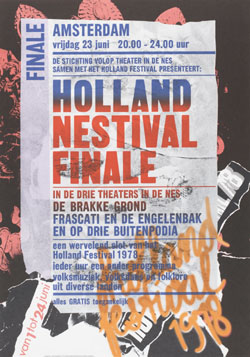
John Heartfield is considered as one of the inventors of the PHOTOMONTAGE. Together with George Grosz he experimented with this new technique. Because of this new technique he made some of the most powerful anti Nazi statements in art.
On the back of a photograph which was taken in 1912 his name is written as “Helmut.” While living in Berlin, in 1917, he anglicised his name from “Helmut Herzfeld” to “John Heartfield,” an English name to protest against the anti-British fervour sweeping Germany. In 1916, crowds in the street were shouting, “Gott strafe England!” (“May God punish England!”)
In 1917, Heartfield became a member of Berlin Club Dada. Heartfield later became active in the Dada movement, helping to organise the Erste Internationale Dada-Messe (First International Dada Fair) in Berlin in 1920. Dadaists were the young lions of the German art scene, provocateurs who disrupted public art gatherings and ridiculed the participants. They labeled traditional art trivial and bourgeois. Heartfield was a member of a circle of German titans that included Erwin Piscator, Bertolt Brecht, Hannah Höch, and a host of others.
Heartfield built theatre sets for Erwin Piscator and Bertolt Brecht. Using Heartfield’s minimal props and stark stages, Brecht interrupted his plays at key junctures to have the audience to be part of the action and not to lose themselves in it.
He is best known for the 240 political art photomontages he created from 1930 to 1938 to expose fascism and The Third Reich. These famous works of political photomontage were an astounding cohesive critique of the rise of fascism.
Heartfield’s artistic output was prolific. His 240 political montages appeared as covers for the Arbeiter Illustrierte Zeitung (AIZ, Workers’ Illustrated Newspaper) from 1930 to 1938, a popular weekly whose circulation (as large as 500,000 copies at its height) rivaled any magazine in Germany during the nineteen thirties. Heartfield’s anti-nazi photomontages were featured monthly on the AIZ cover, an important point, because most copies of the AIZ were sold at newsstands. His anti-fascist art mocked Hitler, fascism, and The Third Reich on major street corners throughout Berlin where Heartfield lived until he nearly escaped assassination by the SS in April, 1933.
It was some 30 years ago that the art / photomontage were first recognized as true works of art and the van Abbemuseum presented them in a special exhibition of which the catalogue is available at www.ftn-books.com

































































































